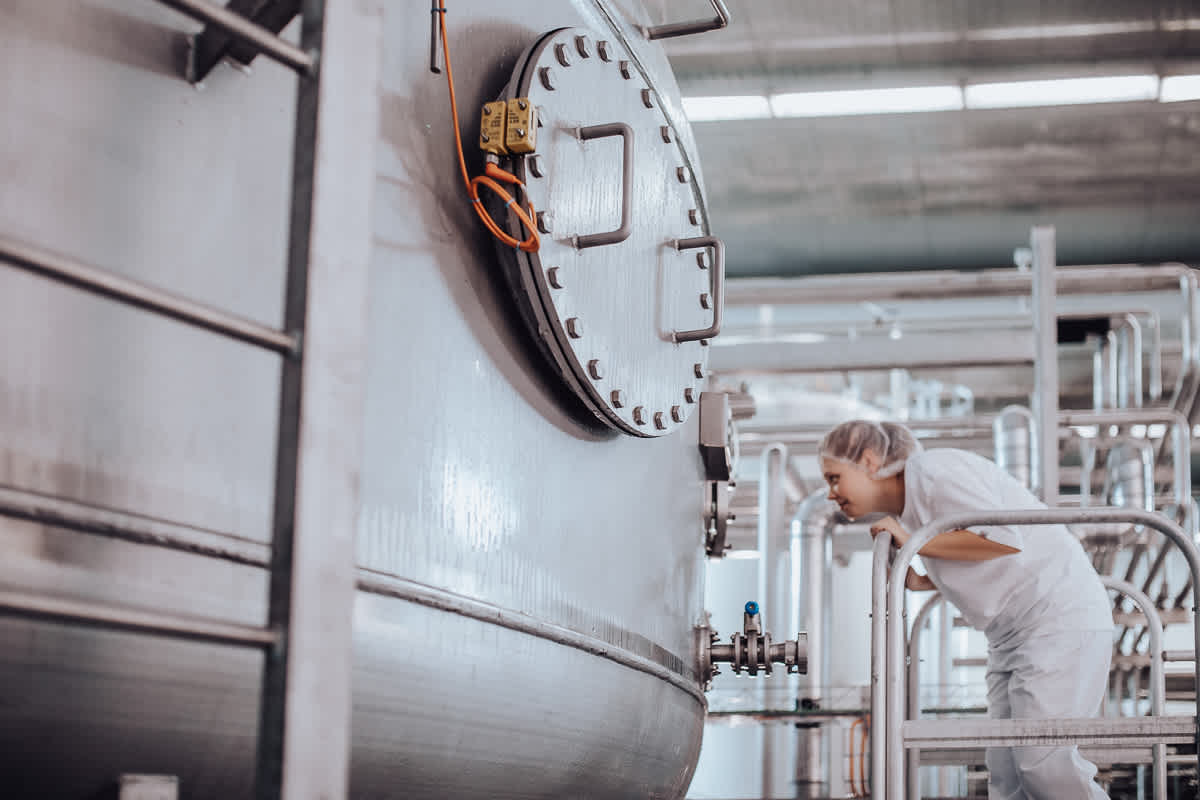Extraction of Lactoferrin
The particular protein
Duration: 2 minutes

INTRODUCING
Extraction of Lactoferrin
As early as the 1930’s, the immune protein Lactoferrin had been discovered in cow’s milk. Since cow’s milk is available in large quantities and contains Lactoferrin in high concentrations (around 150 mg per litre), it is the main source for the production of this versatile and effective protein.
Production of Lactoferrin from milk or whey
The structural similarity (with reference to amino acid chains) of human and bovine (from the cow) Lactoferrin is almost identical. So much so, that commercial production of Lactoferrin uses cow’s milk. Either whey or full milk can be used as the starting point. However, the German milk law, regulating milk quality, stipulate that there should be no removal of components from milk before it is marketed and sold. So, extraction from milk is not economically viable, because to stay compliant with the regulations, the left-over milk would have to be discarded, being prohibited from use and processing afterwards. The utilisation of whey offers an option for sustainable & economical production, since it is a natural by-product of the cheese-making process.
The simple version of extracting Lactoferrin from whey uses a simple process. There is a high level of denaturing, which leads to a diminished activity of the Lactoferrin.
High quality Lactoferrin is used in further processing in baby formula, cosmetics, health foods, supplements, and other similar products. As best as possible, it should be obtained via by a two-phase processing method – first extraction, then purification. This higher quality, and more expensive process of producing Lactoferrin from whey occurs in two stages. It uses an intermediate step involving lactenin. This way the protein can be handled using a lower heat. After the extraction of the lactenin, then a purification process is used with a multi-stage buffer system, as well as repeated micro- and ultra-filtration.
This 2-stage procedure ensures the structural integrity of the Lactoferrin in delivering the highest possible functionality.
Finally, the extracted and purified Lactoferrin goes through a gentle drying phase, to ensure the least possible heat-derived denaturation of the protein. Commonly used drying processes include freeze-drying or spray-drying. Particularly with spray-drying, the temperatures should not be too high (short-term pasteurisation), to avoid damaging the Lactoferrin.
Production of Lactoferrin using genetic engineering
Lactoferrin can also be produced using genetic engineering. Using the gene for Lactoferrin (bLF), yeast cells can be manipulated to produce Lactoferrin. Subsequently, the cells are destroyed, and the protein is extracted.